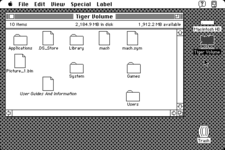I have a Macintosh Plus 4GB booting into OS 7.1 from a BlueSCSI V2 emulator and working fine. However, although I’m reasonably computer literate on modern Macs I know nothing about many aspects of the older Macintoshes. I want to create the original 800K system disks for either 7.1 or 6.0.8 so that I can have the original Macintosh floppy disk booting experience. I have a 6.0.8 MacOS image which I can put on the BlueSCSI and is probably my best choice since I only have four 800k formatted floppies.
But I’m completely confused by what I’ve read online and the videos on YouTube. Can anyone point me at a step-by-step tutorial aimed at a complete newbie that does not assume any knowledge about .sit files, .dsk images, ‘Disk Copy’ or other utilities. I’m guessing it might be possible to tell the BlueSCSI MacOS to write the 800K system disks using the Macintosh Plus’s internal floppy drive but so far I haven’t found such a tutorial.
I have found lots of sites that allow me to download images of the System Disks and I’ve done that too, but don’t know how to take it from there. Obviously I need to get those images on the BlueSCSI in such a way that they can be used to create 800K floppies but I’m stumped as to how. Thanks in advance for any pointers or help.
But I’m completely confused by what I’ve read online and the videos on YouTube. Can anyone point me at a step-by-step tutorial aimed at a complete newbie that does not assume any knowledge about .sit files, .dsk images, ‘Disk Copy’ or other utilities. I’m guessing it might be possible to tell the BlueSCSI MacOS to write the 800K system disks using the Macintosh Plus’s internal floppy drive but so far I haven’t found such a tutorial.
I have found lots of sites that allow me to download images of the System Disks and I’ve done that too, but don’t know how to take it from there. Obviously I need to get those images on the BlueSCSI in such a way that they can be used to create 800K floppies but I’m stumped as to how. Thanks in advance for any pointers or help.

